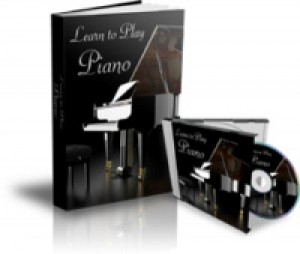 License Type: Master Resell Rights
License Type: Master Resell Rights  File Type: ZIP
File Type: ZIP
 SKU: 3118
SKU: 3118  Shipping: Online Download
Shipping: Online Download
Ebook Sample Content Preview:
Chapter 13 Finding and Choosing Music to Play
You can learn and enjoy playing music you make up and write or make up and improvise on the spot. Sooner or later, you will want to find some sheet music or songbooks for more music. You can get music in music stores or online easily, but it may not be the music you want to try and play. You need to find music that suits your level of play and the best way to do this is to just look at the music.
If you are buying in a store, you can examine the books or sheet music thoroughly before you buy. One thing you can look at is how many sharps or flats the songs in the songbook tend to have. A song that uses too many of the black keys is harder to play when you are first starting out. Also, for some reason, many people find the sharp key signatures more difficult to manage than the flat key signatures. Look, too, at the difficulty of the chords. If the chords are clusters of many notes, you will know that the chords will not be as easy as simple triads. Take note of whether there are chords of four or five notes together on both left and right hands. You can learn these if you want to, but be prepared to work a little bit. Look for difficult rhythms. You might see a lot of dotted notes or notes with different values mixed together to make up a measure. Again, you can take your time and learn these songs, clapping out the rhythms until you have them down before you play. However, if you are looking for some quick success, look for more even and simple note values.
Besides looking at sheet music and songbooks that are already printed, there is another way to buy music in a music store now. Many stores have a special computer set aside for making copies of music. You choose the song you want from a list and if you only know a few words, you may still be able to find the song if the search tools are good enough. After you have selected your song, you get the opportunity to look at the music. You can look at the music from beginning to end, but you cannot copy it until you agree to buy it. The artists are protected in this way because the store pays the royalties from your payment when you buy the copies. You should expect the copies to be high quality and on good paper. You can also get sheet music online but you usually do not get as good of a look at the music you are about to buy. You are more likely to get a small sample to give you an idea of what the music is like. The online companies do not like to show too much because it is too easy for people to steal work that is printed on the internet. They will send you your choices by mail or by download as soon as you pay.
No matter how you get your music, be sure that you get the music you like and you will be able to play in the near future. There is no need to stockpile music for that someday when you will suddenly be playing like a pro. Instead, get songbooks and sheet music that you are ready to use right away.
Chapter 14 Practicing on Your Own
If you are playing the piano as an adult self-learner, you will do best if you work in some practice time most days. You might like to establish a routine of how you will go about your practice. You can do things in a certain order, or you can mix things up differently every day. One thing you should always do when you practice is to play scales.
You do not have to play every scale every day - you might want to focus on the flat scales one day and the sharp scales the next. You do not even have to take it that far - just be sure that you practice scales of some kind for awhile before you begin to play. Next, play some chords. Build on the scales you have played and make up as many chords as you can manage in the time you have allotted to spend on the exercise. The more you play your scales and chords, the better you will be when it comes to improvising. You will even play written music better because it will make more sense.
It is a good idea to have a set musical piece to play every time you practice before you start playing other songs. It can be any song that you can play fairly easily and something that gives you a feeling of satisfaction is always a good choice. Make sure you do not pick a song that is new or tricky for this - you want to start out with a positive experience. You can work on the hard music later in the practice session.
After you have played your starting piece, go on to play songs you have been working on. Go over the rough spots carefully and try to play them from beginning to end without stopping. At this point it is a good time to sight-read any new music you have on hand and want to try. Then, take a little break. Get a drink of water, have something to eat, or make a phone call, then go back to the piano and finish your practice. Many people believe that you have to sit down and play until you are exhausted but this is not true - they never consider that taking a break can breathe new life into your playing.
Once you have had a break, you can use the rest of the time to improvise, making up music based on the chords and scales you played earlier. If you prefer, you can go in a completely new direction. Let this be your time for enjoyment and pure pleasure and, with the right attitude, improvisation does not seem like work at all but rather more like complete freedom.








